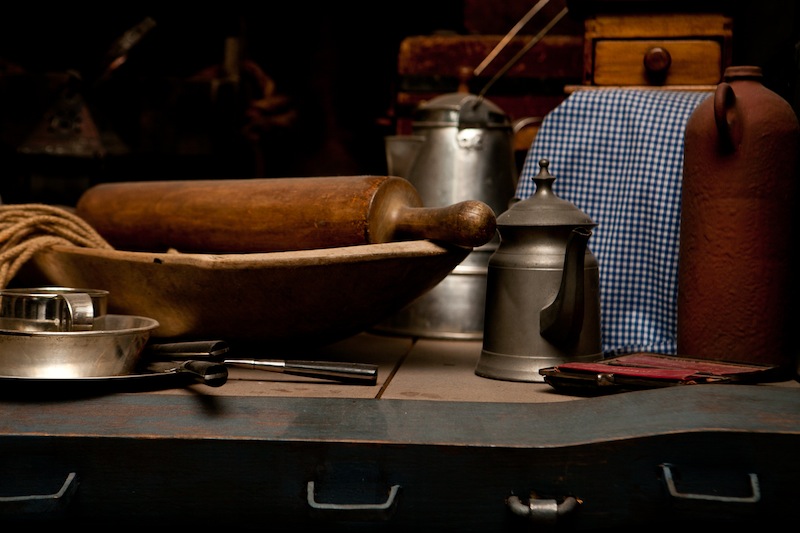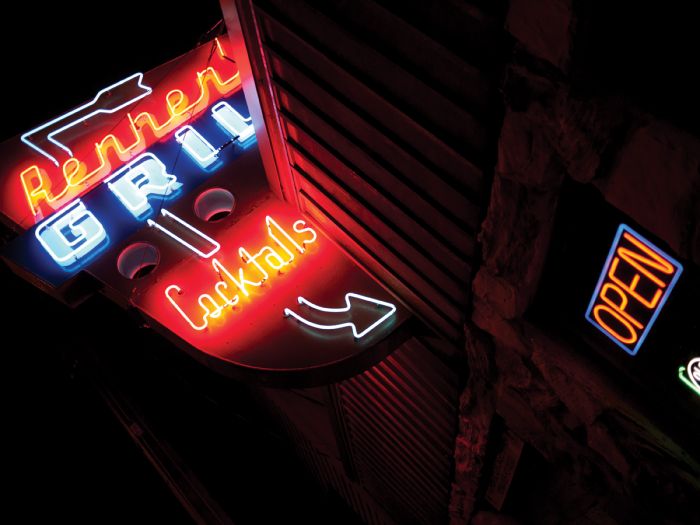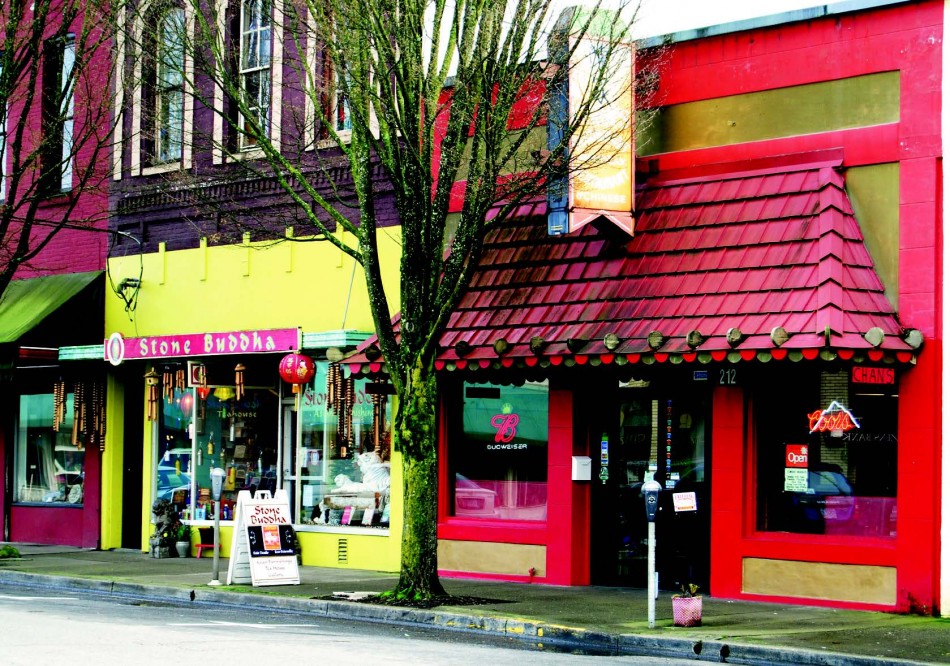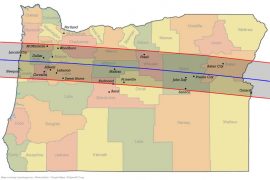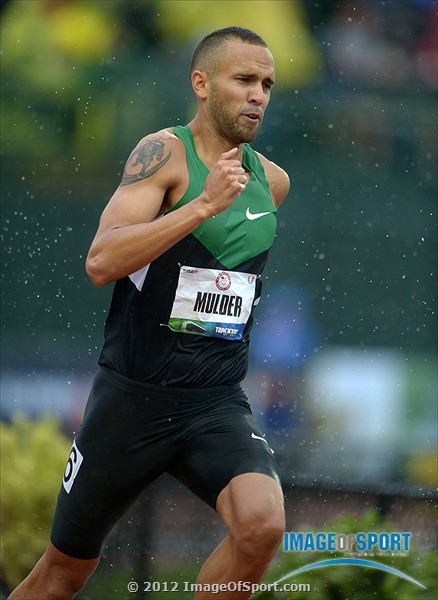It’s not a gas-lighted cave, but the Oregon Historical Society “vault” is one of the state’s best kept secrets, closely guarded by a fifth-generation Oregonian who is no less a state treasure himself.
An editorial cartoon in the Oregonian once depicted Kerry Tymchuk as one of the most influential power brokers in Portland—second only to his Rolodex. Tymchuk spent more than twenty years in politics, as a top aide to some of the country’s top politicos, earning a reputation for effectiveness, integrity and sense of humor.
Tymchuk’s contacts and clout led the financially strapped Oregon Historical Society to hire him as its executive director in 2011. Since then, the four-time “Jeopardy” game show champion has been on another winning streak—stabilizing finances and promoting exhibits and programs that have dramatically increased attendance. One of the country’s oldest state historical museums is now a portal where history is alive—even hip.
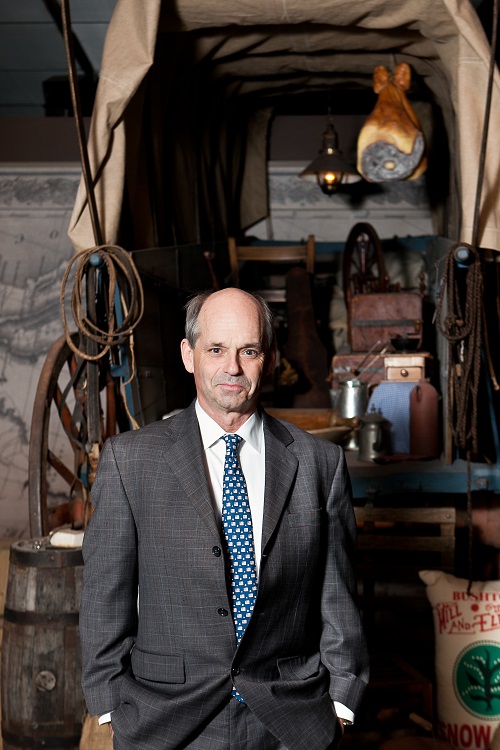
Photo by Andrea Lorimor
What most surprised you when you first went through the storehouse and what are your favorites?
I think the best definition of our 100,000-square-foot vault came from a friend of my 16-year-old son, who described it as a “big room filled with awesome stuff.” To walk through the vault is to walk through Oregon history. Around one corner are shelves with bound books that contain every copy of The Oregonian, dating back to its first issue in 1850. Around another corner is an early nineteenth century Meier and Frank delivery wagon. From American Indian tribal artifacts, to the control panel of the Trojan Nuclear plant, to the ticket booth of the historic Fox Theater, there is no way I could pick a favorite.
Last fall’s “Challenges of Presidential leadership” exhibit broke attendance records. Now Melvin (Pete) Mark is sharing even more of his private collection in the new exhibit, “Two years, One Week: Lincoln’s Legacy.” People will be amazed to learn Lincoln could have become an early Oregonian.
We were tremendously fortunate to be able to work with Pete to share his truly world-class collection of presidential artifacts and documents. We are delighted to follow up our “Windows on America” exhibit with one focusing on Abraham Lincoln and the path from the Emancipation Proclamation to the 13th Amendment banning slavery. Along with displaying some remarkable items, like a very rare first printing of the Emancipation Proclamation, we will also explore ways in which Lincoln, slavery, and the Civil War were experienced in Oregon. We can speculate how history might have changed had Lincoln accepted the 1849 offer from President Zachary Taylor to serve as Governor of the Oregon Territory. Relocating to the Oregon frontier might well have removed Lincoln from the national political scene, and he might never have gained the national reputation that led to his 1860 presidential nomination.
At the same time, you’re opening “Ansel Adams: Masterwork.” What are this iconic photographer’s connections to Oregon?
As the preeminent photographer of America’s natural beauty and landscapes, Adams set the stage for individuals such as Oregon photographer Ray Atkeson, who was instrumental in creating Oregon’s environmental ethic. This exhibit features photographs that Adams hand-selected as a representation of his life’s work.
History seems to bubble up out of you. You often walk up to strangers at OHS and give them an impromptu history lesson.
My pet peeve is people who think history is just memorizing dates and places. It is so much more than that. History is full of fascinating stories of people who made decisions and took actions that change a corner of the world, or the entire world. When I’d see someone in the “Windows on America” exhibit looking at a page of the speech that helped to save Teddy Roosevelt’s life, I can’t help but share with them the entire story. One of my favorite quotes is from the great historian David McCullough, who summed it up nicely this way: “History is who we are and why we are the way we are.”
Who is your favorite Oregon historical figure and event, and why?
That’s a tough one, as there are so many colorful and influential characters in Oregon history. You can’t go wrong with picking the Lewis and Clark expedition as the most momentous event. As far as my favorite Oregon historical figure, I would have to choose Mark Hatfield. I was incredibly privileged to know Senator Hatfield well, and to call him my friend. It’s hard to travel to any community in Oregon without seeing his influence, and his intelligence and integrity set the gold standard for public servants.
Let’s talk about how you’re turning this place around. Yearly attendance is up nearly 40 percent from when you started. What tactics did you adopt to make OHS relevant again?
The passage of the levy in November 2010, which provides free attendance for Multnomah County residents, has certainly helped attendance, but we have also brought more people here through exhibits and programs that appeal to Oregonians of all ages. When the Portland Art Museum, which is just across the Park Blocks from us, announced that they were staging an exhibit of classic automobiles, we put together an exhibit on the history of automobile racing in Oregon. We also have done recent exhibits on the history of rock and roll in Oregon, and one highlighting the fiftieth anniversary of the Columbus Day Storm, which was the most iconic weather event in our state’s history. I have also worked to turn our beautiful pavilion into a location where newsmakers will come to discuss the history that they are making today. As a native of Reedsport, I also wanted to send a message that we are the Oregon Historical Society, and not the Portland Historical Society. So, even though we are based in Portland, we have sponsored great programs and lectures around the state. For the past two years, thanks to a sponsorship from Wells Fargo Bank, I have escorted the nation’s leading Teddy Roosevelt “re-creator” on a journey to historical museums and schools in every corner of Oregon. Wells Fargo has already signed up for another “Teddy Roosevelt Oregon Roadshow” this coming May.
One of your powers of persuasion is sharing the contents of that little suitcase you travel with. What’s inside?
When I am invited to speak about the Oregon Historical Society, I frequently spring some of my favorite treasures from the vault, including Meriwether Lewis’s branding iron, a chunk of the Willamette meteorite, and an early draft of the preamble of the Oregon Constitution. Talking about history is one thing, but showing people history and giving them a close-up look at these artifacts is more fun for me, and much more interesting and enjoyable for them.
What’s your vision for OHS?
When I arrived at OHS, I said that I had three priorities—improving financial stability, increasing our visibility, and improving the quality of our exhibits and programs. Thanks to the hard work of OHS employees, volunteers, and our board of trustees, we have made great progress in each of those areas. But I have long said that the surest way to crush your laurels is to sit on them, so there is much more to do. My vision of OHS is of an institution that has the financial resources to offer high quality educational, entertaining, and thought-provoking exhibits and programs to Oregonians throughout the state.
Oregon is renowned for its wines, which you’re celebrating in the upcoming exhibit, “Clink! The Story of Oregon Wine.” Tell us about that?
We are very excited to host an exhibit in the summer of 2014 that will tell the story of the individuals and institutions who helped transform Oregon into one of the nation’s leading wine-producing states. The exhibit will be part science—the geology, climate, and geography of Oregon that provides such a great environment for grapes, and part a tribute to entrepreneurs who were willing to take a risk. It will also be a great deal of fun. I would suspect that many businesses might be interested in hosting tastings and parties at the exhibit.
We have to ask you, as a four-time “Jeopardy” winner, what behind-the-scenes scoop do you have about the show? How did you prepare?
I watched “Jeopardy” ever since I was a kid, when it was on during the day and Art Fleming was the host. I was out in Los Angeles visiting friends one time and decided to try out. A few weeks later, I got the call that I was selected. They tape five shows a day, two days a week, so I had to bring a variety of changes of clothes in case I won. It’s a tough show to prepare for. Either you’ve picked up a piece of knowledge or trivia in your life or you didn’t. Many questions relate to current events or popular culture, so I made sure to read the newspaper and even People magazine in the weeks leading up to my taping. The most amazing thing to me was how many people recognized me the week my shows were aired. I was living in Washington, D.C. at the time, and couldn’t leave the house without someone coming up to me and saying that they had seen me the night before. Perhaps the most surreal moment of my life was talking to Richard Nixon about my “Jeopardy” experience. He was a big fan of the show, and when he was visiting Sen. Bob Dole, who was my boss at the time, and learned I had been on “Jeopardy,” he insisted I tell him everything about it. I joked later that I should have said, “I’ll take disgraced former presidents for $200 please, Alex.”


